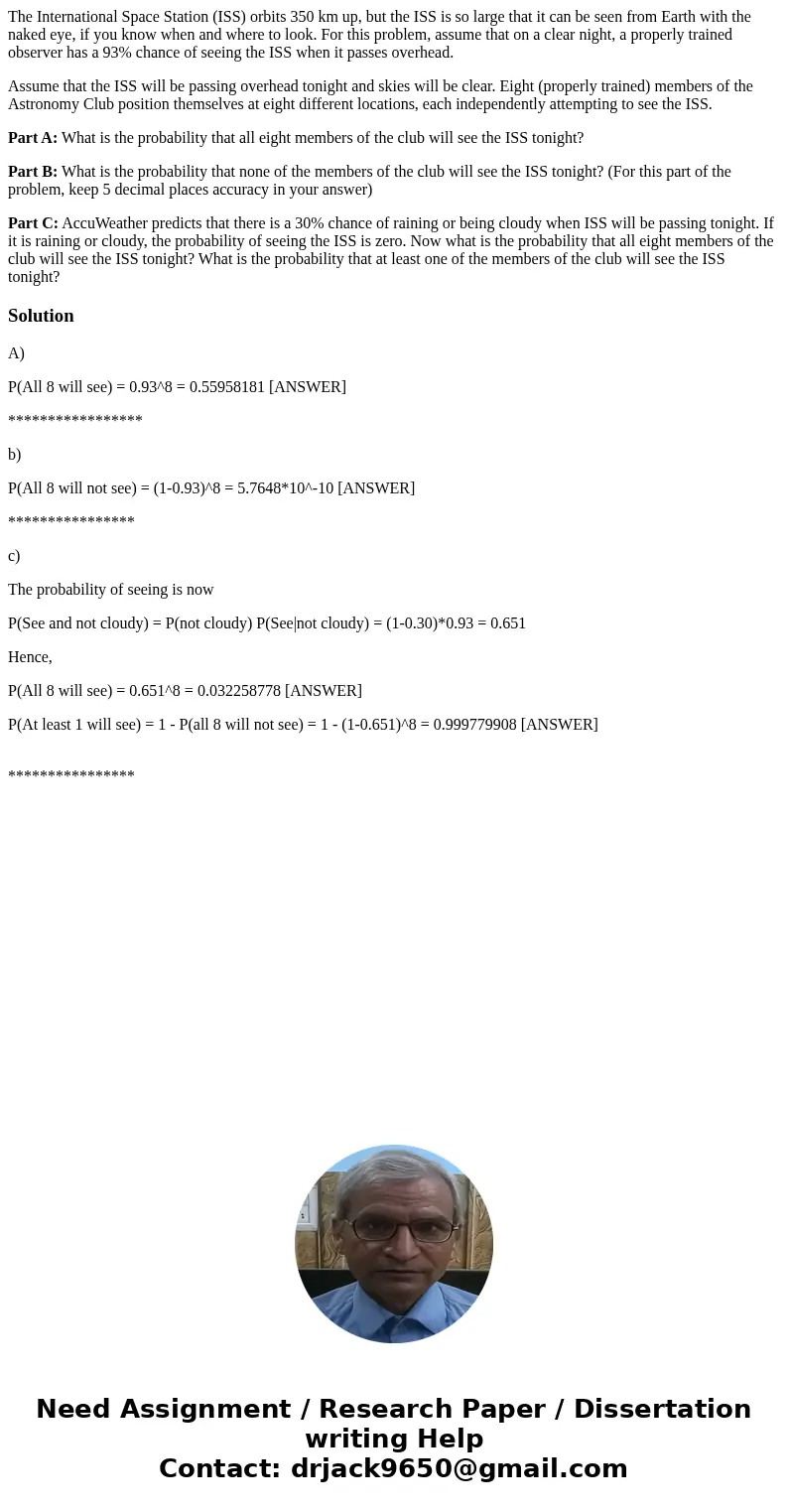The International Space Station ISS orbits 350 km up but the
The International Space Station (ISS) orbits 350 km up, but the ISS is so large that it can be seen from Earth with the naked eye, if you know when and where to look. For this problem, assume that on a clear night, a properly trained observer has a 93% chance of seeing the ISS when it passes overhead.
Assume that the ISS will be passing overhead tonight and skies will be clear. Eight (properly trained) members of the Astronomy Club position themselves at eight different locations, each independently attempting to see the ISS.
Part A: What is the probability that all eight members of the club will see the ISS tonight?
Part B: What is the probability that none of the members of the club will see the ISS tonight? (For this part of the problem, keep 5 decimal places accuracy in your answer)
Part C: AccuWeather predicts that there is a 30% chance of raining or being cloudy when ISS will be passing tonight. If it is raining or cloudy, the probability of seeing the ISS is zero. Now what is the probability that all eight members of the club will see the ISS tonight? What is the probability that at least one of the members of the club will see the ISS tonight?
Solution
A)
P(All 8 will see) = 0.93^8 = 0.55958181 [ANSWER]
*****************
b)
P(All 8 will not see) = (1-0.93)^8 = 5.7648*10^-10 [ANSWER]
****************
c)
The probability of seeing is now
P(See and not cloudy) = P(not cloudy) P(See|not cloudy) = (1-0.30)*0.93 = 0.651
Hence,
P(All 8 will see) = 0.651^8 = 0.032258778 [ANSWER]
P(At least 1 will see) = 1 - P(all 8 will not see) = 1 - (1-0.651)^8 = 0.999779908 [ANSWER]
****************

 Homework Sourse
Homework Sourse